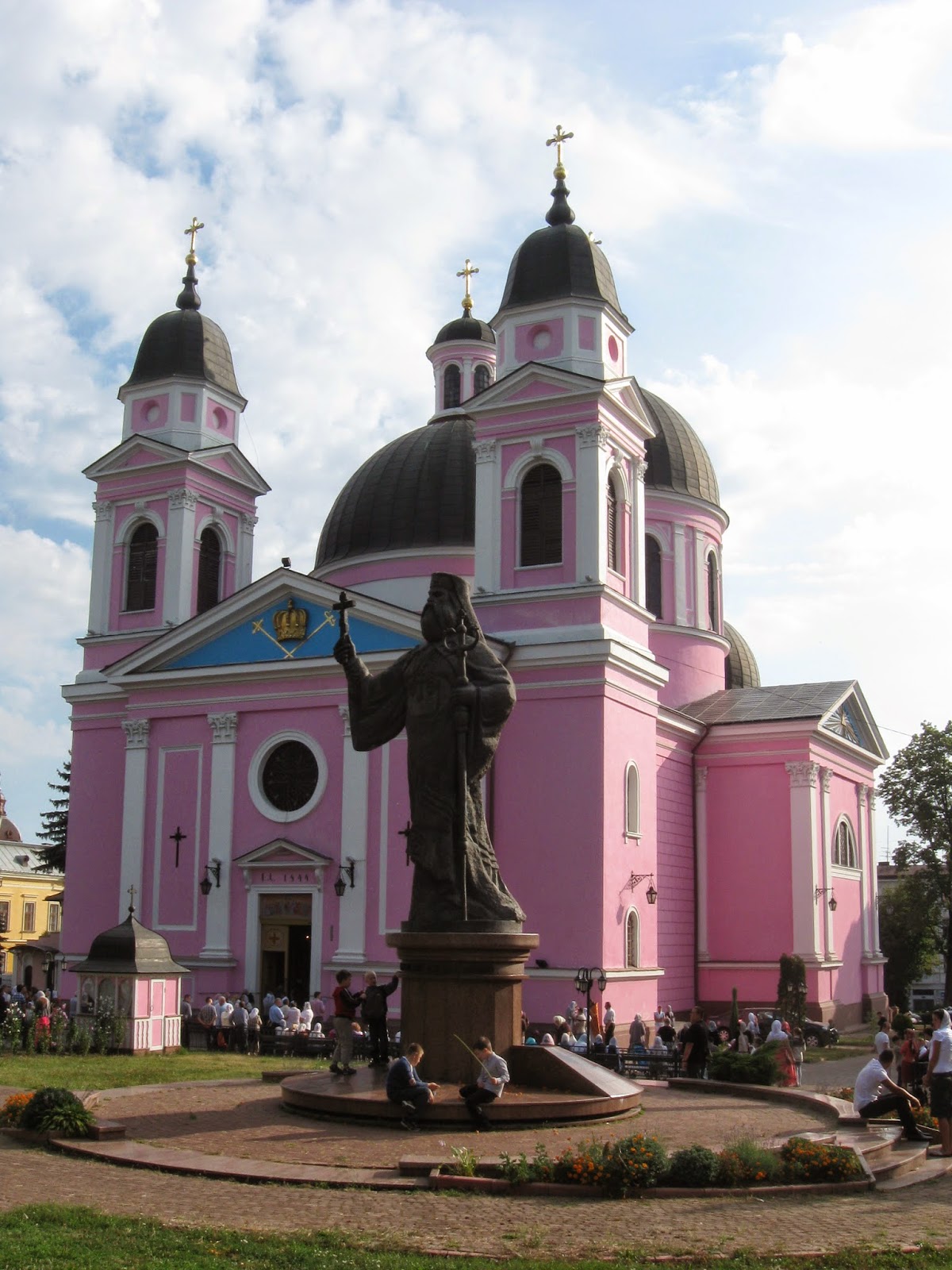More I travel to the different Ukrainian cities, more I understand how wonderful Ukraine is. And this time I'll show You my photos from fine trip to amazing and charming Chernivtsi!!! Chernivtsi is 605-year-old city, crossroad of Ukrainian, Moldavian, Austrian, Romanian, Jewish, German, Hungarian, Armenian, Polish, Czech, Turkish, Russian, Italian, Chilean cultures, etc. Chernivtsi - the centre of Bukovyna, Ukrainian ethnographic region of Western Ukraine.
I really guess that Chernivsti with its numerous landmarks, architectural masterpieces, parks and squares is must-visit Ukrainian city as for all Ukrainian citizens as for all foreigners, travelling into Ukraine.
Chernivtsi railway-station meets guests of the city!
Bushes before railway-station's building are made in the form of Ukrainian name of the city - Чернівці
St. Paraskevia Orthodox Cathedral (Kyiv Patriarchate) - the oldest stony Orthodox Ukrainian temple in Chernivtsi (1844-1863).
One of Chernivtsi architectural monuments - house, which was called ship thanks to its building form and constructed in the end of the XIXth century.
The Exaltation of the Holy Cross Roman Catholic Church, built in 1787-1814. It was first stony building in the middletown of Chernivtsi.
Another architectural monument - dwelling building, constructed on the beginning of the XXth century on Shkilna Street
Architectural monument - Land Use Administration, built in 1880's years. Now specialized Jewish school functions here.
View of Turkish Square
Well on Turskish Square
Old Turkish bridge with newly-constructed trade points
Flower clock and water reservoirs on Turkish Square
Bicycle-monument appeared on Turkish Square in 2009.
Symbolic key-monument as key to the city
Orthodox Crucifix near Chernivtsi secondary school no.14
Bukovinian Land Parliament, constructed in 1875. Nowadays Chernivtsi Palace of Children and Youth is in this building.
Chernivtsi Regional Theatre of Dolls (in the past - House of Colonel, built in 1782).
Ancient sculptures (from the middle of the XIXth century) near the entrance to drug-store on Holovna Street
Bristol Hotel, one of the most luxurious hotels in the city, which was erected on the beginning of the XXth century. Now it's dormitory of Chernivtsi State Medical University.
Philarmonia Square with its fountain in the centre and former Hall of Musical Society, built in 1878, now it's Chernivtsi Regional Philarmonia, and dwelling-commercial house of the XIXth century on the right of Philarmonia building.
Dwelling-commercial houses of the second half of the XIXth century (view from Philarmonia Square).
Chernivtsi Central Post-Office was contructed in 1889 by famous Lviv architect Yulian Zakharevych.
Monument to Ukrainian poet, writer, painter and public figure Taras Shevchenko was erected in 1999 on Tsentralna Square.
Former luxurious Golden Lion Hotel, constructed in 1910.
Chernivtsi Artistic Museum was opened in 1988 in the building of the former Administration of Savings Banks (1901). (p.s. building has very beautiful interior!)
Romanian People's House, built in the middle of the XIXth century. Now Chernivtsi Regional Appeal Court and Romanian Regional Cultural Society named after Mikhay Eminesku, famous Romanian poet, and others organizations function here.
Chernivtsi Town Hall was constructed in 1843-1847.
Sweet flowers and Ukraine's national coat of arms - Ukrainian trident, called tryzub, are on Tsentralna Square ahead of the house of Chernivtsi Town Hall.








































































